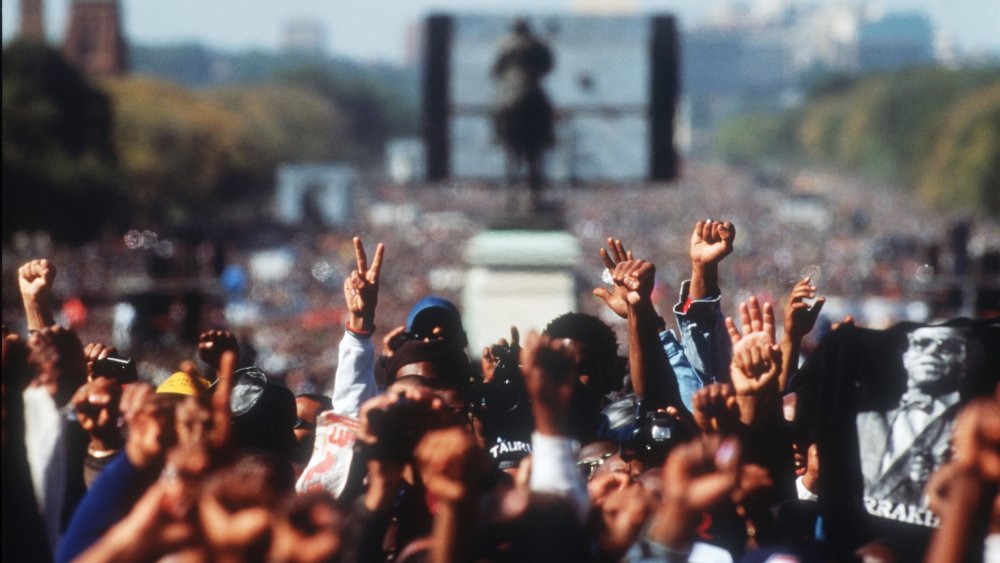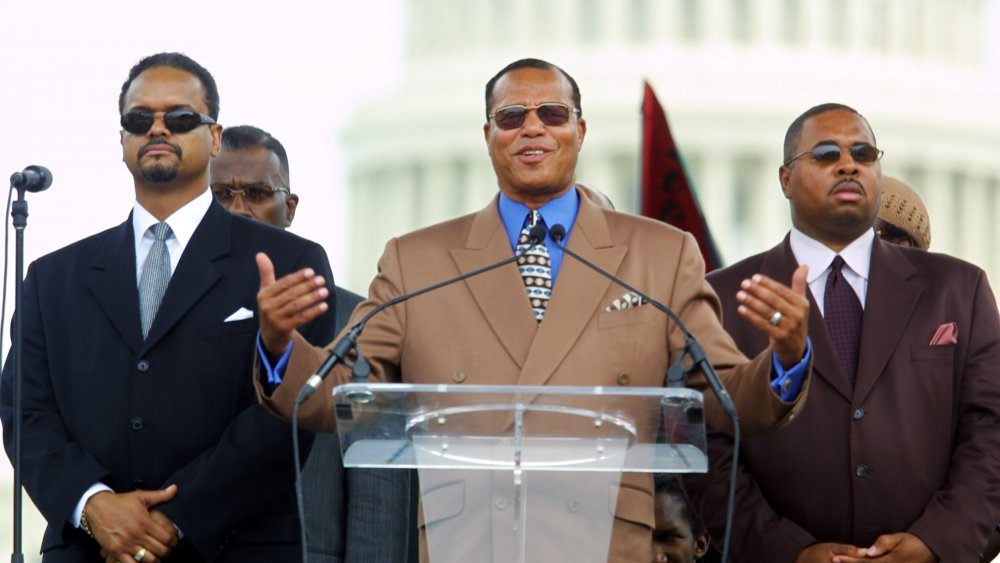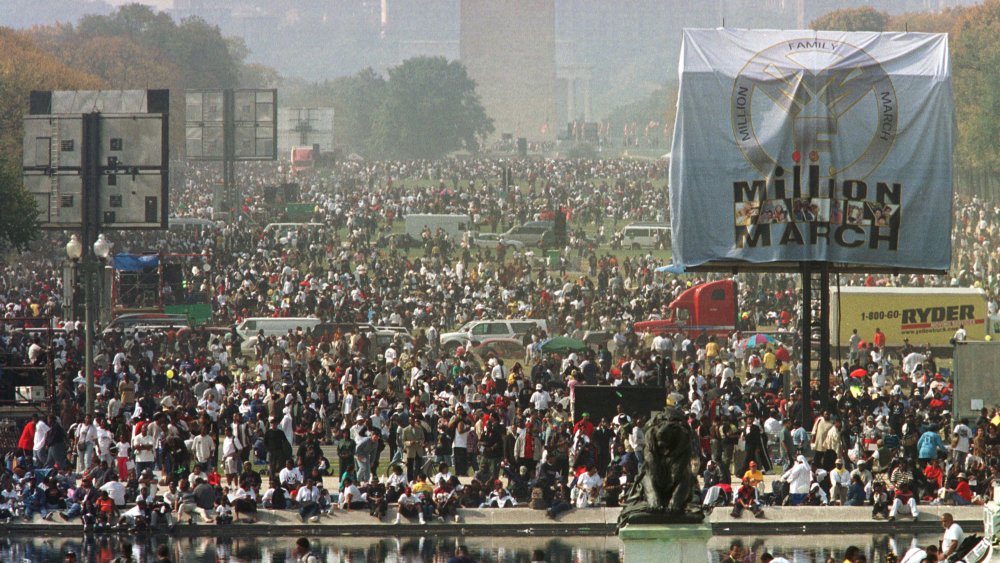The Untold Truth Of The Million Man March
In 1995 anywhere from 400,000 to 1.1 million black Americans filled the Washington Mall, all the way from the Washington Monument to the capitol building, in solidarity against the socioeconomic disparity and systemic oppression experienced by black communities in the US. The "Million Man March," as described by Encyclopedia Britannica, was organized in response to a call-to-action by Minister Louis Farrakhan, leader of the Nation of Islam, an organization that fuses the ideals of Islam with black pride. Farrakhan called on men, specifically, to come together and call for peace between all peoples of the US, speak out against the white supremacy inherently underpinning much of Western society, and challenge the Clinton presidency to say less, but do more, to address decades of racism.
Various local chapters of the NAACP helped to organize the march and bus in people from nearby cities such as Baltimore and Syracuse, as well as all across the nation, to bring those in attendance to listen to prominent speakers such as Reverend Jesse Jackson and poet Maya Angelou, as depicted in coverage by NBC. Some black leaders didn't necessarily support the gathering, however, such as Mary Frances Berry, chairman of the U.S. Commission on Civil Rights, who along with others saw it as inherently separatist and doing little but deepening racial divides. By and large, though, the event was looked upon favorably.
A one in a million chance to make a statement
The lasting effects of the march may be debatable, but at the time it was powerful, unignorable statement that brought together the intentions and minds of all of those in attendance. Bringing such a massive number of people together required immense work and detailed planning, and the untold labor of innumerable people who formed the bedrock of the Million Man March, as well as participated in it.
When Louis Farrakhan called on 1 million black Americans in 1994 to come together the following year in peaceful demonstration, many people, such as Chairman and CEO of Radio One Cathy Hughes, thought that it was simply an impossible task, as described in "The Million Man March – The Untold Story." In all the years she'd lived in Washington D.C., even when Dr. Martin Luther King spoke, she stated that she'd never seen any amount of people approaching 1,000,000. It was black women like her, though, who were responsible for heading up local meetings or organize the march, even though many women did not directly participate in the march itself.
Built on the labor of those behind the scenes
Other individuals, such as former Supreme Captain of the Nation of Island, Sharrief Muhammad, describes having to meet with every single law enforcement and military agency in the United States — literally — in order to approve the march. This included the Navy, the Army, the CIA, and the FBI all converging on the office of then-Mayor of Washington, D.C., Marion Barry. Muhammad, like many others, was doubtful of the final result, but drew strength and inspiration from Louis Farrakhan's faith.
Minister Abdul Kadir Muhammad, who was in attendance on the day of the march, stated that the sense of brotherhood experienced by everyone was unlike anything he'd ever felt before. Everyone was polite, courteous of others, and showed deference and respect. His vision of black America was altered that day, he states, and he learned that black men indeed want to work together in peace with each other, and shared a common goal.
The Million Man March may be more than 20 years old by now, but its significance remains as salient ever.


